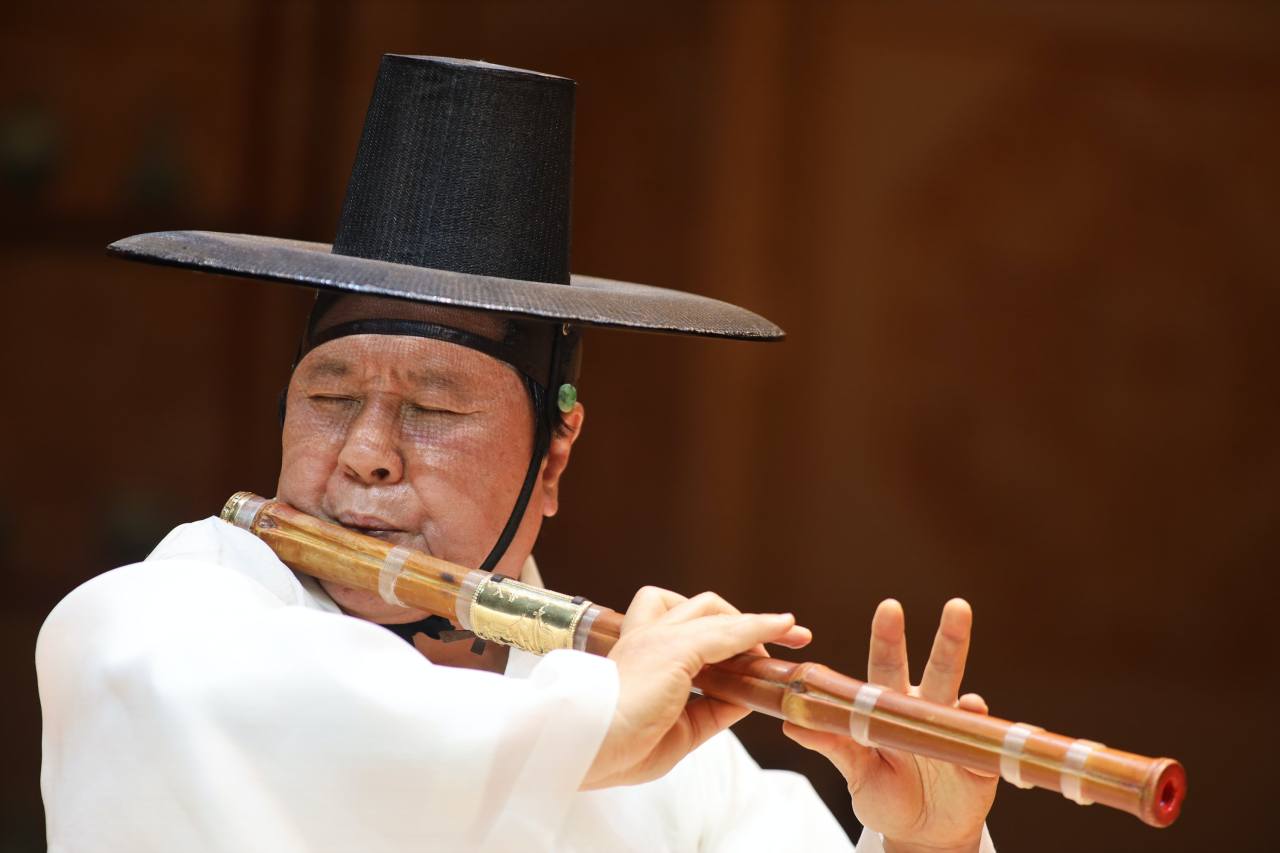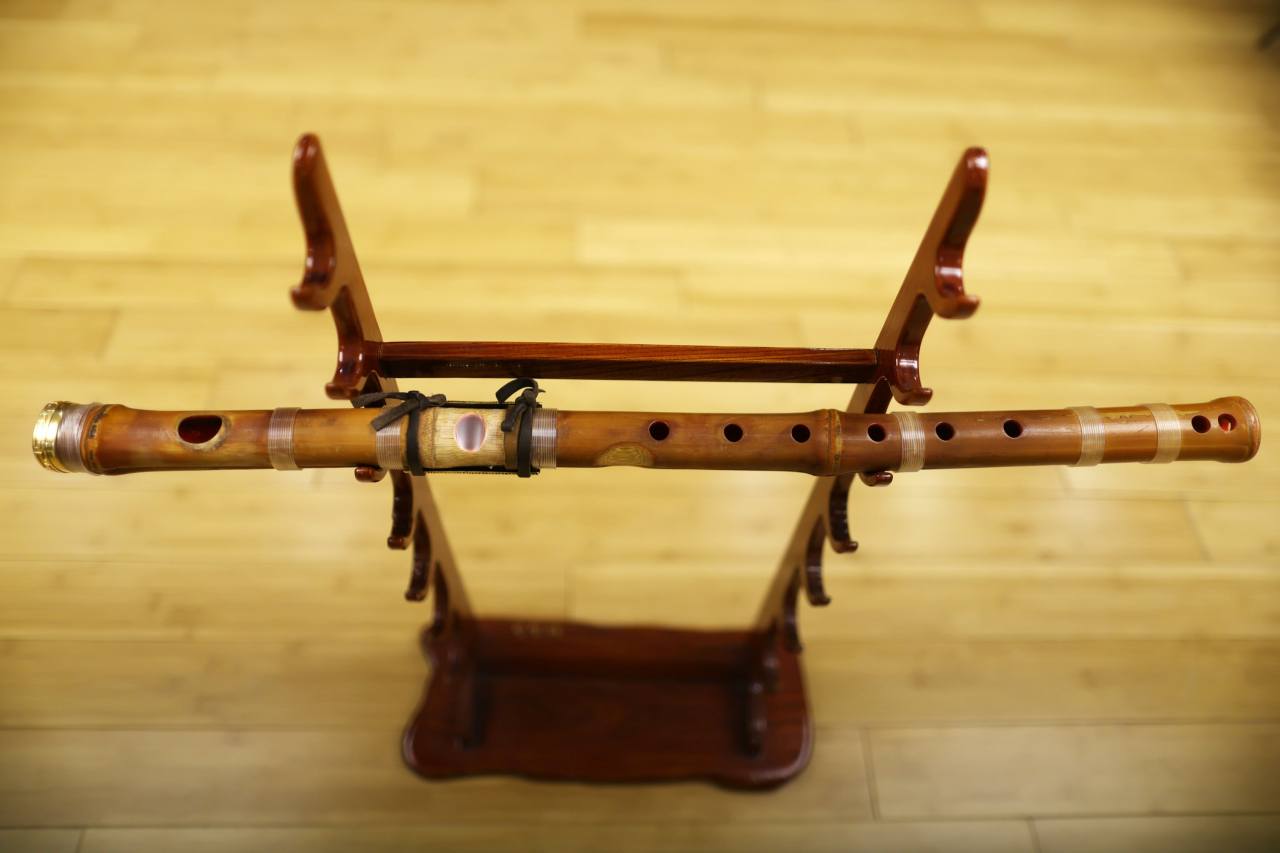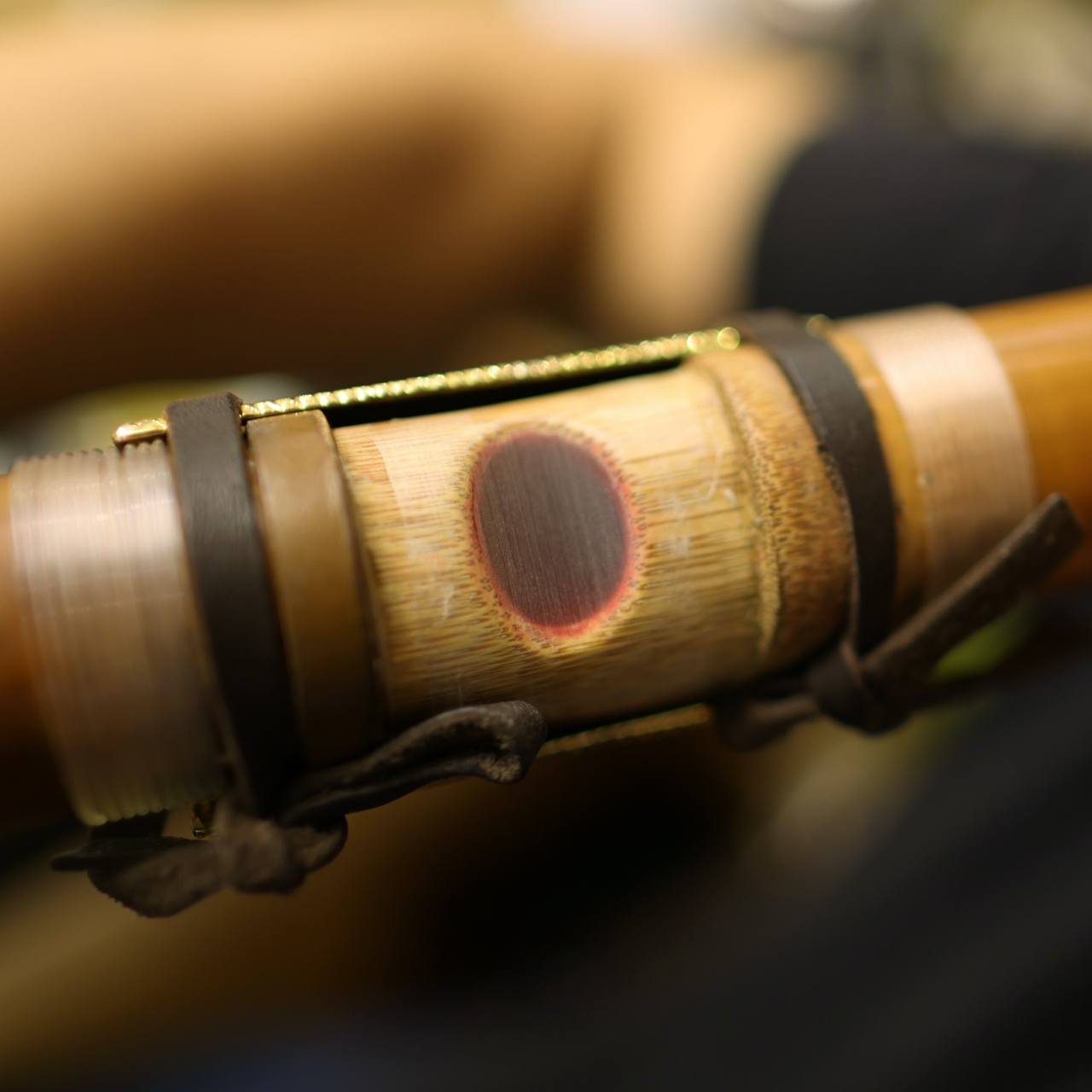[Visual History of Korea] Daegeum: Korean bamboo flute hits all the right notes
By Korea HeraldPublished : Jan. 1, 2022 - 16:01

Daegeum, a one-of-a-kind woodwind instrument indigenous to Korea, is made from double-groove bamboo, which is an anomaly in bamboo but perfect for making daegeum flutes with thick walls.

Double-groove bamboo is unlike regular bamboo in that the bamboo has a very narrow hollow in the center. A tubular opening about 16 millimeters in diameter is usually cut to turn the bamboo into a woodwind instrument.
“The harder and stronger the bamboo, the more refreshing the sound of the instrument,” said daegeum maestro Won Jang-hyun who also used to make his own flute.
A daegeum is complete when a thin reed called galdae cheong, a translucent membrane from tall perennial reed grass that is found in Korean wetlands, is placed over the opening on the tough bamboo flute. The reed vibrates when the instrument is played, creating its unique sound.
“A daegeum is a musical instrument that is made of complementary ‘yang’ and ‘eum’ forces: The strong bamboo lumber is the Yang … white membranes of the reed grass the ‘eum,’” said Choi Woo-suk, a daegeum maker.
Choi said he “picked up on the uniqueness of each daegeum instrument. Each daegeum has a different thickness because they are made from natural elements. The performer‘s physical size and lung capacity along with the uniqueness of each instrument determine the final outcome of daegeum music.”
The Korean bamboo flute’s origin traces back to a 7th-century divine flute called Manpasikjeok. The celestial music from the Manpasikjeok flute, according to the legend, fended off invading enemies, healed the population of diseases, brought rain during droughts and calmed volatile winds and rough waters.
Daegeum’s large mouthpiece, the opening, and the thick natural hardy Korean bamboo, which is the thickest among all bamboo musical instruments in the world, mean it requires rather a large volume of forceful air to create music. It‘s not just for anyone.
“Ninety percent of students who try to learn daegeum quit. People give up learning daegeum because it’s difficult to make beautiful sounds. There are many cases where it is difficult to overcome that challenge,” said Won the daegeum maestro, who has taught hundreds of pupils.
Daegeum music is said to have tremendous power and impact on our hearts as well as our bodies, capable of bringing out sad recollections, distant memories, sorrowful love, and unhealed pains.
“Daegeum music can calm frail nerves, help relieve traumatic wounds, help focus attention on studies, as well as make us feel sad or elated. It’s powerful music, and there are researchers who are studying even more potential benefits and impact of daegeum music,” said the maestro.
Daegeum music today is performed in court as aristocratic and folk music, as well as in contemporary classical music, popular music, and in film scores.
The daegeum has notes that are called “half-hole” notes, which involve difficult fingering.

“It took me three months of practicing every day for me to start hearing some music out of my daegeum” recalls Maestro Won who started learning the daegeum seriously at age 15.
All of my four teachers: Kim Yonggi (1940-2010) Oh Jinseok (1891-1972) in Gwangju, and Kim Dongjin (1937-1989) and Han Il-seop (1927-1973) in Seoul, were originally from Hwasun, South Jeolla Province.
“I heard a lot of praise when I was young that people were hearing pure celestial sounds from my daegeum, fitting of Korea, the land of morning calm,” said the maestro.
Of all the musical instruments made from bamboo, the Korean daegeum is the only flute capable of sounding its unique sharp and refreshing music.
Daegeum maestro Won Jang-hyun’s grandson Won Chae-woo, a 6th grader and who has been watching his grandfather playing the daegeum over the years, can perform “half-hole” notes, which even graduate students in his grandfather’s classes have difficulty with.

Large and strong lung capacity for blowing long notes are some of the key components of successfully playing daegeum, which requires lots of physical strength and stamina.
Kim Yoon-hee, a professional organist in Chicago, said she couldn’t even think about playing the daegeum when she was studying music in Korea.
“It‘s a very difficult instrument,” said Kim.
Won had set a goal at the beginning of 2021 to practice his signature 40-minute piece at least six times a day.
“Because of the strenuous nature of performing the daegeum, I know some musicians who don’t practice often unless they have to perform,” said Won.
As of mid-December 2021, the maestro had practiced his signature repertoire more than 3,000 times.
By Hyungwon Kang (hyungwonkang@gmail.com)
---
Korean American photojournalist and columnist Hyungwon Kang is currently documenting Korean history and culture in images and words for future generations. -- Ed.
-
Articles by Korea Herald







![[KH Explains] Hyundai's full hybrid edge to pay off amid slow transition to pure EVs](http://res.heraldm.com/phpwas/restmb_idxmake.php?idx=644&simg=/content/image/2024/04/18/20240418050645_0.jpg&u=20240419100350)







![[From the Scene] Monks, Buddhists hail return of remains of Buddhas](http://res.heraldm.com/phpwas/restmb_idxmake.php?idx=652&simg=/content/image/2024/04/19/20240419050617_0.jpg&u=20240419175937)

![[KH Explains] Hyundai's full hybrid edge to pay off amid slow transition to pure EVs](http://res.heraldm.com/phpwas/restmb_idxmake.php?idx=652&simg=/content/image/2024/04/18/20240418050645_0.jpg&u=20240419100350)

![[Today’s K-pop] Illit drops debut single remix](http://res.heraldm.com/phpwas/restmb_idxmake.php?idx=642&simg=/content/image/2024/04/19/20240419050612_0.jpg&u=)